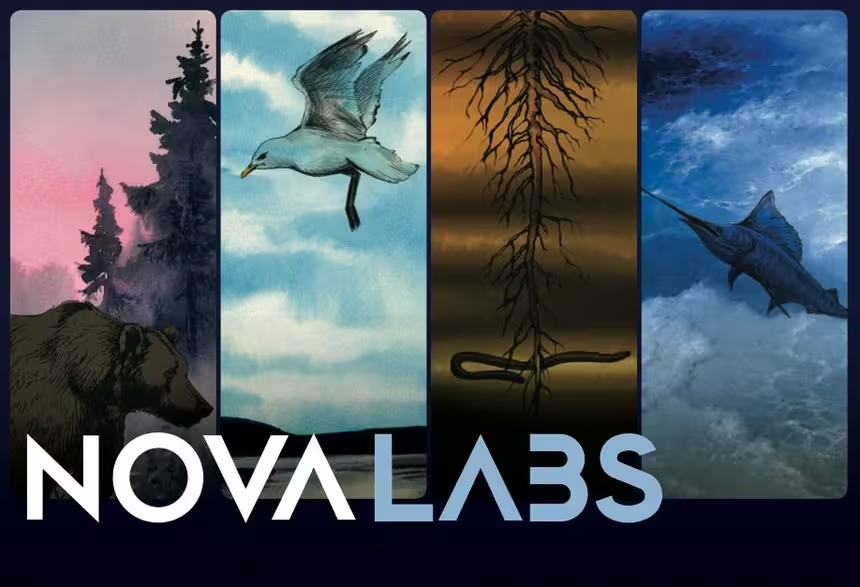
Why Does This Mummy Have So Many Tattoos?
Clip: Season 43 Episode 5 | 3m 4sVideo has Closed Captions
Otzi, a 5,000-year-old mummy, has 61 tattoos arranged in 19 groups across his body.
Researchers used a unique camera sensitive to invisible light to discover the exact number and location of all of Otzi’s tattoos — including a never before seen tattoo on the right side of his chest.
Problems playing video? | Closed Captioning Feedback
Problems playing video? | Closed Captioning Feedback
National Corporate funding for NOVA is provided by Carlisle Companies and Viking Cruises. Major funding for NOVA is provided by the NOVA Science Trust, the Corporation for Public Broadcasting, and PBS viewers.

Why Does This Mummy Have So Many Tattoos?
Clip: Season 43 Episode 5 | 3m 4sVideo has Closed Captions
Researchers used a unique camera sensitive to invisible light to discover the exact number and location of all of Otzi’s tattoos — including a never before seen tattoo on the right side of his chest.
Problems playing video? | Closed Captioning Feedback
How to Watch NOVA
NOVA is available to stream on pbs.org and the free PBS App, available on iPhone, Apple TV, Android TV, Android smartphones, Amazon Fire TV, Amazon Fire Tablet, Roku, Samsung Smart TV, and Vizio.
Buy Now

NOVA Labs
NOVA Labs is a free digital platform that engages teens and lifelong learners in games and interactives that foster authentic scientific exploration. Participants take part in real-world investigations by visualizing, analyzing, and playing with the same data that scientists use.Providing Support for PBS.org
Learn Moreabout PBS online sponsorship- These are Otzi's tattoos.
The iceman is the oldest tattooed mummy ever discovered.
Researcher Marco Samadelli has been one of Otzi's caretakers for nearly 20 years.
Recently, Marco set out to inventory every tattoo on Otzi's skin.
- We discovered exactly 61 tattoos.
- That's a lot of ink.
- Marco's research revealed something no one had ever seen before, thanks to a unique camera, sensitive to invisible light.
- Multispectral imaging is a technique used to see what the eye can't see.
It's with this technique we discovered every single detail, even under the surface of the mummy's skin.
- The exact number and location of all the tattoos was a mystery until now.
- We discovered a tattoo that had never been seen before, four parallel lines on the right side of his chest.
We were able to see all his tattoos and obtain a complete mapping.
- 61 tattoos arranged in 19 groups across his body.
- Archeologist Aaron Deter-Wolf studies the use of tattoos in ancient cultures.
- Tattooing has been practiced throughout a huge portion of human history going back at least 16 or 18,000 years before present.
During that time period, people have been tattooed for all sorts of different reasons depending on their culture and the region in which they lived.
We generally agree that Otzi's tattoos don't seem on the whole to be decorative or symbolic.
- For Aaron and other experts, a key clue to understanding the purpose of the tattoos could be where they've been placed.
- A number of Otzi's tattoos seem to correspond to areas where he suffered from ailments or injuries.
He had arthritis in his lower back, and there are tattoos on his lower lumbar area.
He had arthritis in his right knee, there are tattoos on the back of his right knee.
He had arthritis in his ankles, there are a number of tattoos around both his right and left ankles.
Most recently, this new set of tattoos is located on his lower right abdomen.
Among the many ailments that he suffered from was gallstones and whipworms in his colon, and this is a place that is very close to those areas and could potentially have been used to treat the pains he was experiencing.
- Tattooing the skin to alleviate pain has been the practice of many cultures.
- And there are therapeutic tattoo traditions that have been documented all across the world, and in India, in Southeast Asia, North America, in the American Arctic.
- Otzi's tattoos are the earliest direct evidence of this ancient tradition.

- Science and Nature

Capturing the splendor of the natural world, from the African plains to the Antarctic ice.













Support for PBS provided by:
National Corporate funding for NOVA is provided by Carlisle Companies and Viking Cruises. Major funding for NOVA is provided by the NOVA Science Trust, the Corporation for Public Broadcasting, and PBS viewers.


